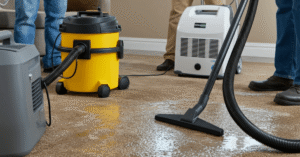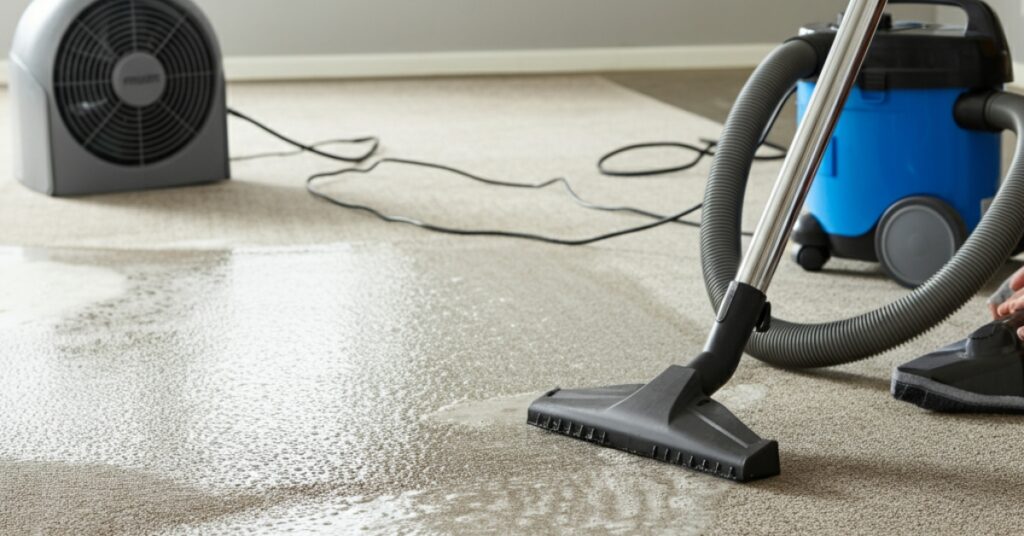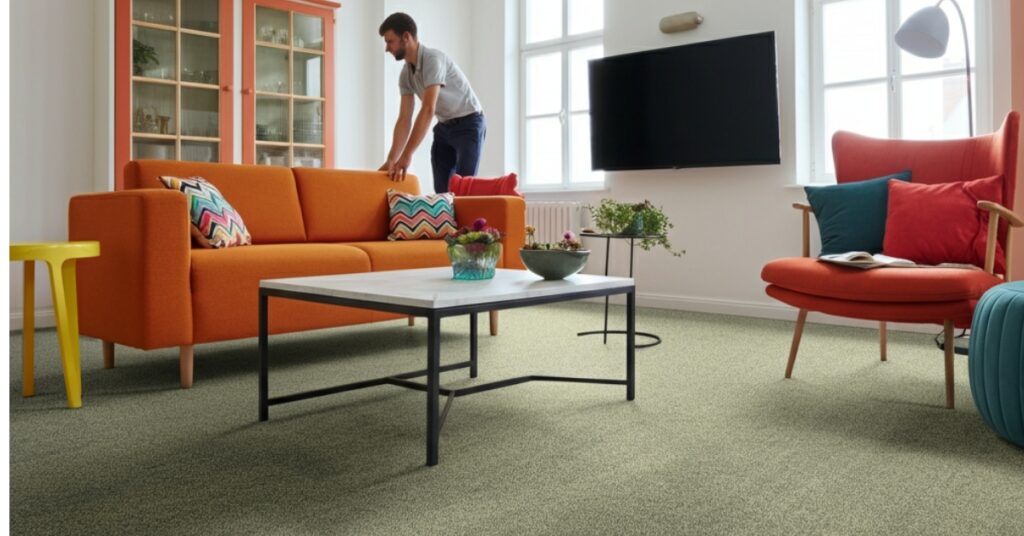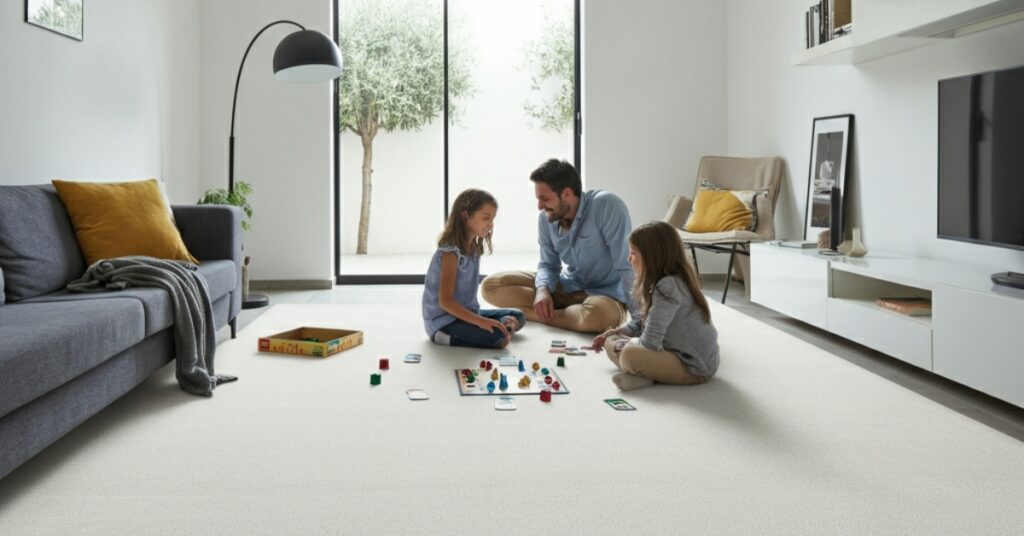As an Amazon Associate, I earn from qualifying purchases.
Knowing how to clean carpet and dry carpet fast is essential for maintaining a fresh and hygienic home. A damp carpet can be a breeding ground for mold and mildew, leading to unpleasant odors and potential health issues. Luckily, with the right techniques and tools, you can effectively clean your carpets and get them dry in no time. This guide provides a comprehensive approach to achieving a spotless, dry carpet quickly.
Learning the proper steps not only restores your carpet’s appearance but also extends its life. Whether you’re dealing with a recent spill or performing a deep clean, the methods for quick drying are crucial. Following these instructions will help you avoid the common pitfalls of carpet cleaning, such as oversaturation and residue buildup, ensuring your carpets remain a beautiful and healthy part of your home.
Why Quick Carpet Drying is Important
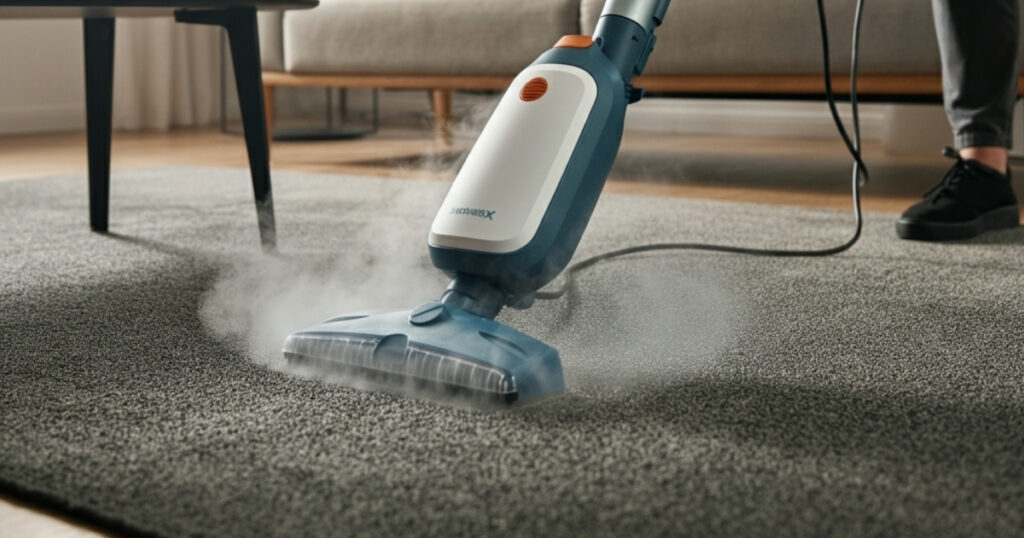
Beyond just the inconvenience of a wet floor, there are significant reasons to focus on drying your carpet fast. Moisture is the primary catalyst for mold and mildew growth, which can appear in as little as 24 to 48 hours. These fungi release spores into the air, which can trigger allergies and respiratory problems. A damp carpet also attracts more dirt and dust, quickly undoing all your hard cleaning work.
Furthermore, prolonged moisture can damage the carpet fibers and backing, causing them to break down prematurely. This can lead to delamination, where the backing separates from the carpet pile, ultimately ruining the carpet. By prioritizing fast drying, you protect your investment, maintain indoor air quality, and ensure your living space is clean and comfortable. This is a crucial part of knowing how to clean and dry your carpet effectively.
Essential Tools and Materials You’ll Need
Before you begin the cleaning process, gathering the right tools will make the job much smoother and more effective. Having everything on hand allows you to work efficiently without interruptions. Proper preparation is a key step in learning how to clean a carpet and dry it fast.
Here’s a list of what you will need:
- Vacuum cleaner (preferably with a HEPA filter)
- Carpet cleaning solution (store-bought or homemade)
- Carpet cleaning machine (optional, but highly recommended for deep cleaning)
- Stiff-bristled brush or sponge
- Clean towels or microfiber cloths
- Buckets
- Fans (box fans or oscillating fans)
- Dehumidifier (optional, but very helpful)
- Wet/dry vacuum (for extracting excess water)
Step-by-Step Guide: How to Clean Carpet and Dry Carpet Fast
Follow these detailed steps to ensure your carpets are not only clean but also dry quickly, preventing any secondary issues like mold or musty smells.
Step 1: Prepare the Room and Carpet
First, remove all furniture and other items from the carpeted area. This gives you unobstructed access to the entire surface and prevents furniture from getting wet or damaged. If some heavy pieces cannot be moved, place plastic wrap or aluminum foil under their legs to protect them from moisture during the cleaning process.
Next, you need to thoroughly vacuum the carpet. This is a critical step because it removes loose dirt, dust, pet hair, and other debris from the surface. A clean surface allows the cleaning solution to penetrate the fibers more effectively. Make sure to vacuum in multiple directions to lift as much embedded dirt as possible, which is a foundational part of how to clean carpet properly.
Step 2: Spot Treat Stains
Before you start a full deep clean, it’s important to address any specific stains. Different types of stains require different treatments, so identify the source if possible. For most common stains, a simple mixture of white vinegar, a bit of baking soda and water or a store-bought spot treatment can be effective. Always test your cleaning solution on an inconspicuous area first, like inside a closet, to ensure it doesn’t discolor the carpet.
Apply the spot treatment solution to a clean cloth, not directly onto the carpet, to avoid oversaturating the area. Gently blot the stain, working from the outside in to prevent it from spreading. Avoid rubbing aggressively, as this can damage the carpet fibers. Continue blotting until the stain is lifted. This targeted approach is a key component of how to clean a carpet thoroughly.
Step 3: Deep Clean the Carpet
For a comprehensive clean, you can use a carpet cleaning machine, which is often the most effective method. You can rent one from a local hardware store or purchase your own. Follow the manufacturer’s instructions, filling the machine with the appropriate mixture of hot water and a recommended carpet cleaning solution. Work in small, manageable sections to ensure even coverage.
If you don’t have a machine, you can clean the carpet manually. Mix your cleaning solution in a bucket and apply it lightly using a stiff-bristled brush. Be careful not to soak the carpet. Work the solution into the fibers in a systematic pattern, then use a separate bucket of clean water and a cloth to rinse the area by blotting. This manual method requires more effort but is still a valid way to clean your carpet.
Step 4: Extract Excess Water
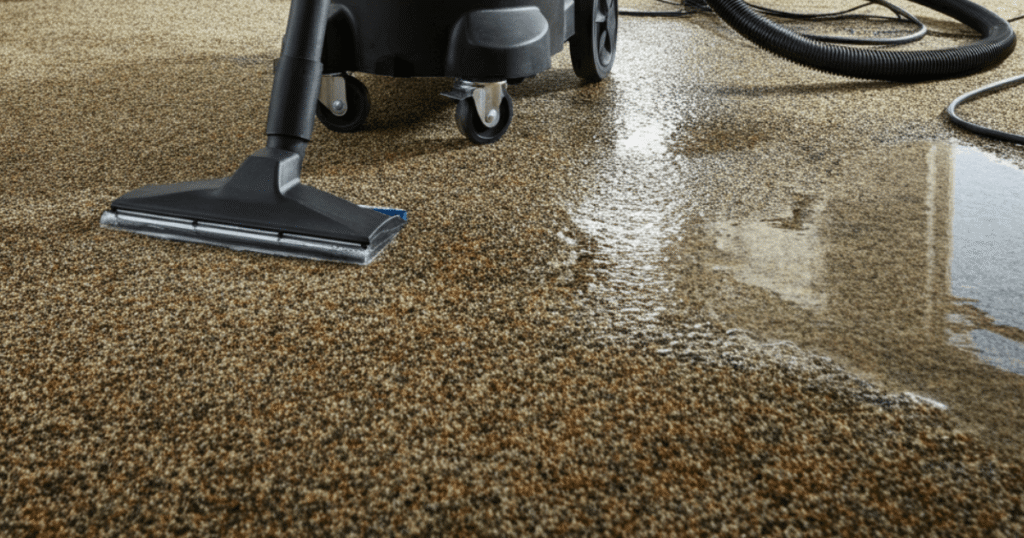
Immediately after cleaning, the most crucial step for quick drying begins: extracting as much water as possible. If you used a carpet cleaning machine, it will have a suction function that pulls out most of the dirty water. Go over the entire carpet with the suction feature one more time, even after the cleaning cycle is complete, to remove any lingering moisture.
If you cleaned the carpet by hand, a wet/dry vacuum is an invaluable tool for this stage. Use it to suck up the excess water from the carpet fibers. Alternatively, you can use old towels. Lay them over a section of the carpet and walk on them to absorb the moisture. Replace the towels as they become saturated and repeat the process until you can’t pull much more water out. This is central to how to dry carpet fast.
Accelerating the Drying Process
Once the initial excess water is removed, the focus shifts to air circulation and humidity control to dry the carpet fast.
Create Maximum Airflow
Good ventilation is your best friend when trying to dry a carpet quickly. Open all the windows and doors in the room to allow fresh air to circulate. This helps evaporate the moisture from the carpet fibers and carries it out of the room. Creating a cross-breeze by opening windows on opposite sides of the room can be particularly effective.
In addition to natural ventilation, use fans to speed up the process. Place several fans around the room, pointing them directly at the carpet surface. Box fans are excellent for this purpose, as they move a large volume of air. Keep the fans running continuously until the carpet is completely dry to the touch. This active approach is fundamental to how to dry carpet fast.
Use a Dehumidifier
A dehumidifier can significantly shorten the carpet drying time by pulling moisture directly out of the air. This is especially useful in humid climates or during colder months when opening windows isn’t practical. Place the dehumidifier in the center of the room and let it run until the carpet feels dry. You’ll need to empty its water collection tank periodically.
If you don’t own a dehumidifier, you can turn on your home’s air conditioning system. The AC also works to reduce humidity in the air, which will help the carpet dry faster. The combination of fans for air circulation and a dehumidifier or AC for humidity control creates the ideal environment for quick carpet drying.
A Note on Using Heaters
While it might seem intuitive to use a heater to dry a carpet faster, this should be done with caution. High heat can damage certain types of carpet fibers and even cause the carpet backing to shrink or warp. Additionally, heating a damp, enclosed space without proper ventilation can increase humidity and encourage mold growth.
If you do choose to use a heater, opt for a low setting and ensure there is plenty of air circulation from fans and open windows. The goal is to create a warm, dry breeze rather than just blasting the carpet with hot air. In most cases, relying on fans and a dehumidifier is a safer and more effective strategy for drying your carpet fast.
Drying Wet Carpets After Water Damage
Water damage to carpets from floods, leaks, or spills can quickly become a serious issue if not addressed promptly. Soaked carpets trap moisture deep in the fibers and padding, especially in wall-to-wall setups or basement areas. Pulling up the carpet allows air to reach the padding underneath, which often holds water longer and may need extra drying or replacement. In rooms throughout the house, airflow is essential. Fans, open windows, and dehumidifiers help dry even the most saturated areas.
Drying time depends on the extent of the damage. A flooded carpet might take 48 to 72 hours to fully dry, while a spill could be resolved in a few hours. Humidity, carpet thickness, and ventilation all influence how long it takes. After cleaning, carpets also need time to dry, especially if padding was involved. Whether it’s a soaking wet carpet in a bedroom or damp flooring in a living room, quick action helps prevent mold, odors, and long-term damage.
Speed is important. Removing furniture, increasing airflow, and warming the space can help dry carpet faster. In severe cases, drying the carpet pad after a flood is essential to avoid lingering moisture. Whether dealing with a soaked carpet, wet padding, or a damp basement floor, consistent drying techniques restore comfort and protect your home from deeper issues.
Final Inspection and Maintenance
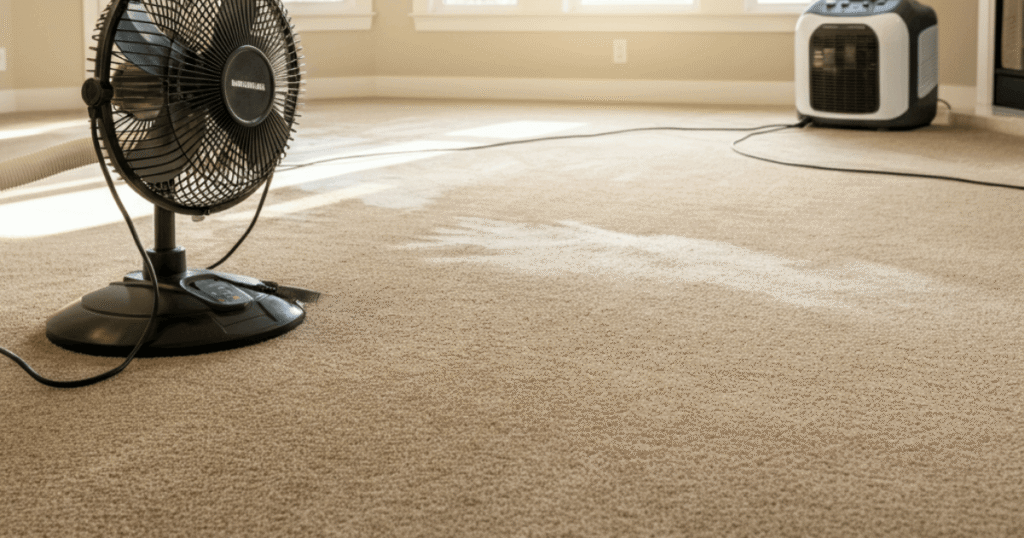
Once you believe the carpet is dry, perform a thorough final check. Walk over the entire area in clean, white socks to detect any remaining damp spots. Pay special attention to the corners and edges of the room, as these areas often take the longest to dry. If you find any dampness, reposition your fans to target those spots for a few more hours.
After confirming the carpet is completely dry, you can vacuum it one last time. This will help lift and fluff the carpet fibers, giving it a fresh, uniform appearance. You can then move your furniture back into the room. Regular vacuuming and prompt attention to spills will help maintain your carpet’s cleanliness and extend the time between deep cleanings.
Frequently Asked Questions
1. How long does it take for a carpet to dry after cleaning?
Yes, typically, a professionally cleaned carpet can take anywhere from 6 to 12 hours to dry completely. However, if you follow the quick-drying techniques outlined in this guide, such as using fans and a dehumidifier, you can often reduce this time to 2 to 4 hours.
2. Can I walk on the carpet while it’s drying?
No, it’s best to avoid walking on a wet carpet as much as possible. Walking on it can flatten the fibers and transfer dirt from your shoes onto the clean, damp surface. If you must cross the room, wear clean, indoor-only shoes or lay down a path of clean towels.
3. What happens if my carpet stays wet for too long?
Yes, if a carpet remains wet for more than 24 hours, you run the risk of mold and mildew growth. This can lead to unpleasant musty odors, potential health issues, and damage to the carpet backing and the subfloor beneath.
4. Can I use a hairdryer to dry my carpet?
No, while a hairdryer can be used for very small spots, it’s not practical or efficient for drying an entire room. Also, the concentrated high heat can potentially melt or damage synthetic carpet fibers. It’s safer to rely on fans and good air circulation.
5. Is baking soda effective for cleaning and drying a carpet?
Yes, baking soda is great for absorbing odors and lifting light dirt, but it isn’t a primary drying agent. You can sprinkle it on a dry or slightly damp carpet to deodorize it, let it sit for a few hours, and then vacuum it up. It won’t significantly speed up the drying of a wet carpet, though.
Achieve a Perfectly Clean and Dry Carpet
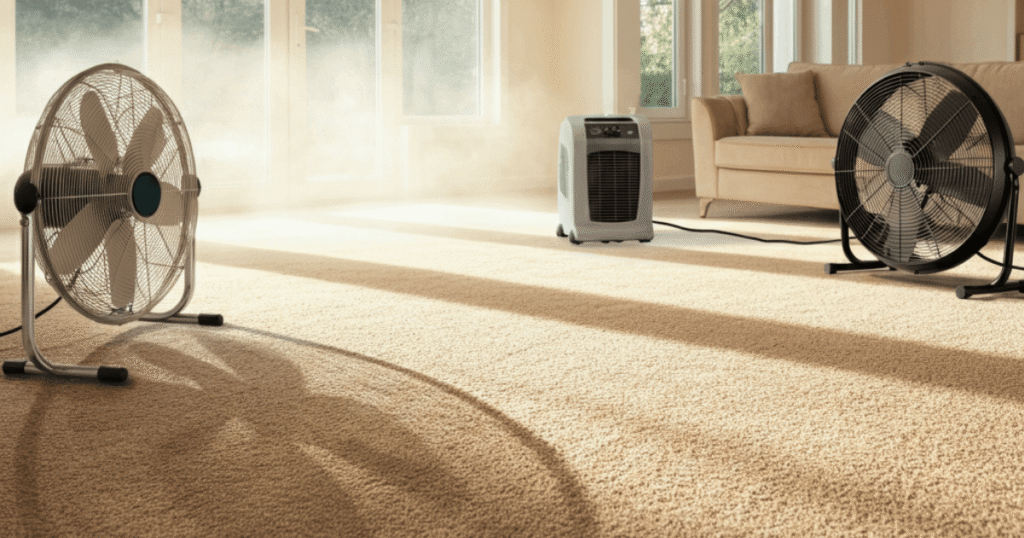
By following these steps, you now know how to clean carpet and dry carpet fast, preserving its beauty and ensuring a healthy environment for your home. Proper technique, from preparation to the final drying stages, is what makes the difference. With a little effort and the right tools, you can enjoy fresh, clean carpets without the long wait or the worry of mold and mildew.
Regular maintenance and swift action on spills will keep your carpets looking their best for years to come. Now you are equipped with the knowledge to handle carpet cleaning like a pro.
As an Amazon Associate, I earn from qualifying purchases.

